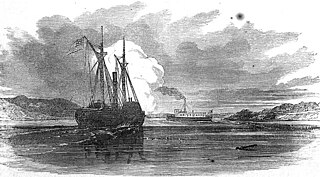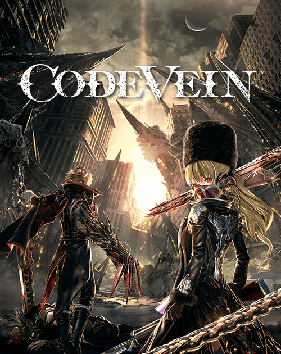
In mathematics, a fractal is a geometric shape containing detailed structure at arbitrarily small scales, usually having a fractal dimension strictly exceeding the topological dimension. Many fractals appear similar at various scales, as illustrated in successive magnifications of the Mandelbrot set. This exhibition of similar patterns at increasingly smaller scales is called self-similarity, also known as expanding symmetry or unfolding symmetry; if this replication is exactly the same at every scale, as in the Menger sponge, the shape is called affine self-similar. Fractal geometry lies within the mathematical branch of measure theory.
The technological singularity—or simply the singularity—is a hypothetical future point in time at which technological growth becomes uncontrollable and irreversible, resulting in unforeseeable consequences for human civilization. According to the most popular version of the singularity hypothesis, I. J. Good's intelligence explosion model of 1965, an upgradable intelligent agent could eventually enter a positive feedback loop of self-improvement cycles, each successive; and more intelligent generation appearing more and more rapidly, causing a rapid increase ("explosion") in intelligence which would ultimately result in a powerful superintelligence, qualitatively far surpassing all human intelligence.

Yokohama is the second-largest city in Japan by population and by area, and the country's most populous municipality. It is the capital and most populous city in Kanagawa Prefecture, with a population of 3.7 million in 2023. It lies on Tokyo Bay, south of Tokyo, in the Kantō region of the main island of Honshu. Yokohama is also the major economic, cultural, and commercial hub of the Greater Tokyo Area along the Keihin Industrial Zone.

Digital art refers to any artistic work or practice that uses digital technology as part of the creative or presentation process. It can also refer to computational art that uses and engages with digital media. Since the 1960s, various names have been used to describe digital art, including computer art, electronic art, multimedia art, and new media art.

Chengdu is the capital city of the Chinese province of Sichuan. With a population of 20,937,757 at the 2020 census, it is the fourth most populous city in China, and it is the only city with a population of over 20 million apart from direct-administered municipalities. It is traditionally the hub of Western China.

A tugboat or tug is a marine vessel that manoeuvres other vessels by pushing or pulling them, with direct contact or a tow line. These boats typically tug ships in circumstances where they cannot or should not move under their own power, such as in crowded harbors or narrow canals, or cannot move at all, such as barges, disabled ships, log rafts, or oil platforms. Some are ocean-going, and some are icebreakers or salvage tugs. Early models were powered by steam engines, which were later superseded by diesel engines. Many have deluge gun water jets, which help in firefighting, especially in harbours.

Ningbo is a sub-provincial city in northeast Zhejiang province, People's Republic of China. It comprises six urban districts, two satellite county-level cities, and two rural counties, including several islands in Hangzhou Bay and the East China Sea. Ningbo is the southern economic center of the Yangtze Delta megalopolis. The port of Ningbo–Zhoushan, spread across several locations, is the world's busiest port by cargo tonnage and world's third-busiest container port since 2010.

Hyannis Air Service Inc., operating as Cape Air, is an airline headquartered at Cape Cod Gateway Airport in Hyannis, Massachusetts, United States. It operates scheduled passenger services in the Northeast, the Caribbean, Midwest, and Eastern Montana.
BYD Auto Co., Ltd. is the main automotive subsidiary and brand of BYD Company, a publicly listed Chinese multinational manufacturing company. It manufactures passenger battery electric vehicles (BEVs) and plug-in hybrid electric vehicles (PHEVs), collectively known as new energy vehicles (NEVs) in China. It also produces electric buses and trucks. The company sells its vehicles under the main BYD brand and high-end vehicles under its Denza, Yangwang and Fangchengbao brands.

The Japan Mobility Show (ジャパンモビリティショー), called Tokyo Motor Show (東京モーターショー) (TMS) until 2019, is a biennial auto show held in October–November at the Tokyo Big Sight, Tokyo, Japan for cars, motorcycles and commercial vehicles. Hosted by the Japan Automobile Manufacturers Association (JAMA), it is a recognized international show by the Organisation Internationale des Constructeurs d'Automobiles, and normally sees more concept cars than actual production car introductions, which is the reason why the automotive press sees the show as one of the motorshow's big five.
The automotive industry in India is the world's fourth-largest by production and valuation as per 2022 statistics. As of 2023, India is the 3rd largest automobile market in the world in terms of sales.

The Nissan NV200 is a light commercial and leisure activity, 4/5-door van designed and produced by the Japanese automaker Nissan since 2009.

The Cursed Crusade is an action hack and slash game developed by Kylotonn and published by DTP Entertainment for Europe and Atlus USA for North America.

Automotive production is a significant industry in Russia, directly employing around 600,000 people or 1% of the country's total workforce. Russia produced 1,767,674 vehicles in 2018, ranking 13th among car-producing nations in 2018, and accounting for 1.8% of the worldwide production. The main local brands are light vehicle producers AvtoVAZ and GAZ, while KamAZ is the leading heavy vehicle producer. Eleven foreign carmakers have production operations or are their plants in Russia.

Code Vein is an action role-playing game developed by Bandai Namco Studios and published by Bandai Namco Entertainment. It was released worldwide on September 27, 2019 for PlayStation 4, Windows, and Xbox One, and sold over three million copies but received mixed reviews from critics.

This article presents a detailed timeline of events in the history of computing from 2020 to the present. For narratives explaining the overall developments, see the history of computing.

Black Myth: Wukong is a 2024 action role-playing game developed and published by Game Science. The game is inspired by the classical Chinese novel Journey to the West and follows an anthropomorphic monkey based on Sun Wukong from the novel.

Your Turn to Die -Death Game by Majority- is a Japanese episodic horror adventure game first released on 28 August 2017. The game was developed by Nankidai, a manga artist, and was later adapted into a manga and light novel, which were both released in 2021. An English translation was released in 2019. A Steam release was released on February 20, 2023 in Early Access with the vgperson translation used for the English version.
Emma Mieko Candon is an American writer.















